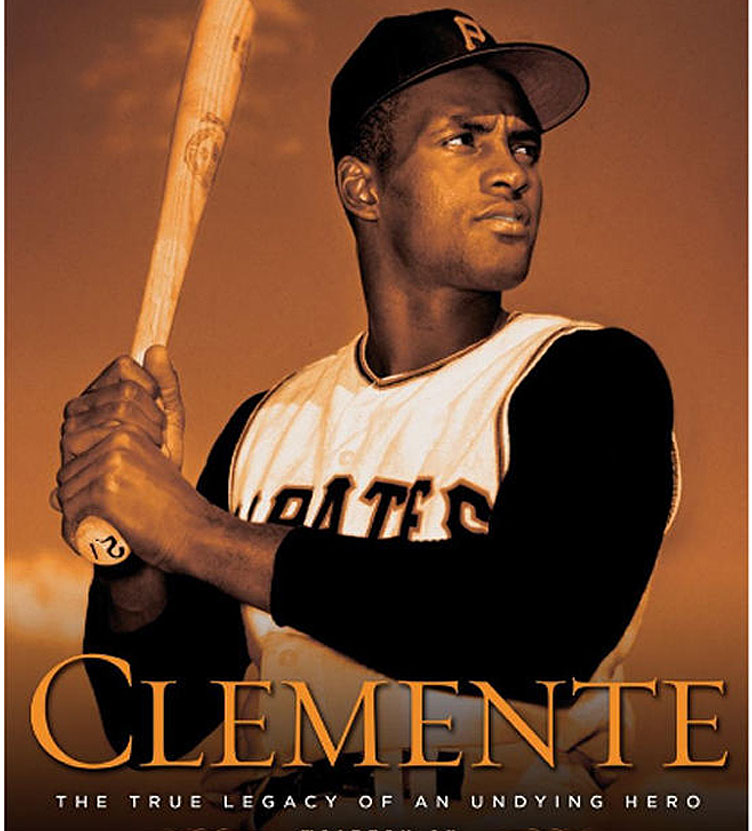
Roberto Clemente
The Great 21 was a legend in his own time and certainly beyond. As a right fielder for the Pittsburgh Pirates, Roberto Clemente played for 18 seasons, was a 12-time All-Star, Golden Glove winner and made it to the World Series with his team twice, one time being series MVP. Off the field he was a dedicated family man to his wife and three sons. His other passion was helping others and regularly delivered food and baseball equipment to the poor throughout Latin America. Clemente was en route to Nicaragua, to deliver supplies to earthquake victims there, when his cargo plane crashed shortly after takeoff on New Year’s Eve in 1972. Clemente was the first Latino player to be inducted to the Hall of Fame in 1973 shortly after he passed.
Pele
Pele nee Edson Arantes do Nascimento learned the game of futbol from his father in Minas, Brazil. Having grown up in poverty he could not afford equipment and improvised by stuffing a sock with rags and using it as a ball. At 15 years old Pele began playing with a local soccer club and a year later became a professional player. Having played for over two decades Pele is considered FIFA’s most successful scorer, was part of three Brazilian World Cup teams and is considered the greatest player that has ever lived. His performance was so mesmerizing that he is considered a national treasure of Brazil and even kept the peace between neighboring tribes in Nigeria who called a ceasefire in order to watch The Black Pearl play.
Hugo Chavez
Whether you consider him a dictator or a liberator, Hugo Chavez got under the skin and in the hearts of his people. As one of six children in the southwestern region of Venezuela, Chavez was raised by working class parents and eventually joined the military academy in pursuit of becoming a professional baseball player (the school had the best coaches). His skills on the diamond weren’t as strong as his dream however and he went on to start a career in the Army instead. While a lieutenant Chavez blew his first mission when he began sympathizing with the insurgents, peasants he believed were fighting for equality, he was meant to capture and detain. He then decided to use his military position to advance his new socialist beliefs, specifically a Bolivarian Revolution. He led a failed military coup in 1992. His second attempt was successful and catapulted him to the forefront of his country’s new government. He served as Venezuela’s President from 1999-2013 when he passed away of cancer. He incensed emotions in his country and the Western world for his anti-imperialist beliefs and actions. The Afro-Venezuelan started a socialist revolution in South America and inspired both ire and passionate loyalty amongst detractors and Chavistas alike.
Wifredo Lam
One of the great artists of the Modernist art movement, Wifredo Lam was greatly influenced by his cultura as well as by the styles of his contemporaries. The son of a Chinese father and African/Cuban mother Lam drew and painted his surroundings: the African religious traditions of Orisha worship and the lives of the freed African slaves he lived among. Lam studied his craft at Havana’s Escuela de Bellas Artes but soon moved to Madrid where he learned technique with from those who’d taught Salvador Dali and befriended artists like Pablo Picasso and Joan Miro. His signature style blends Surrealism, Cubism along with African and Afro-Cuban art and colors harkening back to his African religious traditions. His masterpiece “The Jungle,” which depicts masked figures emerging from a jungle, was created when he returned to Cuba where he perfected his style. Lam used his art as a statement about his Africaness without apology or explanation.
Jose Alberto Justiniano”El Canario”
Creating a musical style of any kind is always a challenge but creating a sub-genre of a beloved sound is even harder. That is exactly what Dominican singer and musician Jose Alberto did in the early 1980s. First as a singer of Tipica ’73, a renowned salsa orchestra from the 1970s, he is a master sonero who can whistle the way others sing. His skills earned him the nickname “El Canario.” He would leave to form his own band in 1983 and release his first album Dance With Me which would establish the genre of salsa romantica as it is known today (we’re looking at you Marc Anthony).
